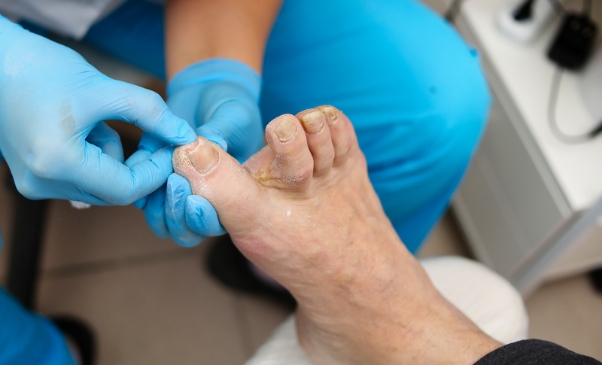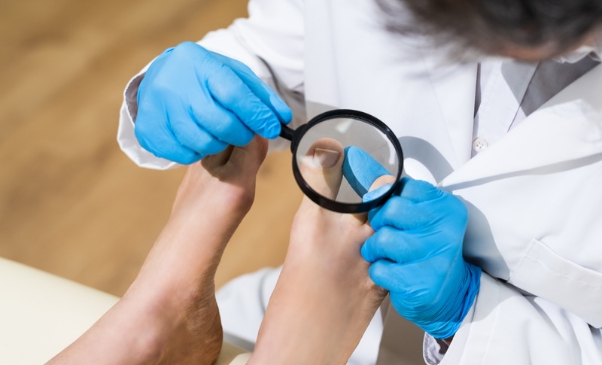
This condition can be caused by more than just fingernails that grow into the skin. Ingrown fingernails are another problem that could happen. Since you don't have to force your fingers into shoes that are too small, this is much less likely to happen. Another thing that can affect whether or not you get ingrown fingernails is the shape of your nails. Ingrown fingernails are typical and can be painful. They can also often lead to an infection. Even simple things like using a computer or washing the dishes are painful. It hurts everywhere.

What is an ingrown fingernail?Keratin is a type of protein that can be found in nail and skin structures. When many layers of keratinized cells move towards the surface of the finger, nails form. The ridges in your nail bed and your nails are a perfect match. These will help your nails stay in place better.If the nail's shape changes, the ridges may start to grow apart. Because of this, your nail could become loose. If this keeps happening, the nail could grow into the skin on the side or corner of the body. An ingrown nail is another name for this problem. Some of the following ideas could help explain what's going on:
- injury
- A fungal infection is an infection that is caused by a fungus.
- A rate of growth that is either too fast or not fast enough
- Cutting skills that aren't up to par, like forgetting to clip a nail before cutting it.
- a point to end on
- One symptom of anxiety is biting one's nails.

Preparing for your appointmentIf you have an ingrown toenail on your foot, your primary care doctor or a foot doctor, also called a podiatrist, may be able to tell. Have your questions ready so you can tell the group about them at the meeting. Here are some things to think about:
- How long will this keep going on? Do you think that it will last a long time?
- What are the different treatment types I can choose, and what are the pros and cons of each?
- Could you please tell me what kind of outcomes I can expect?
- Can I wait to see if the sickness disappears before I start treatment?
- How long must I keep this nail care routine while my toe heals?
Here are some questions that your doctor or another qualified medical professional might ask:
- When did you first notice that any of these things were wrong?
- Do the feelings stay with you for the rest of the day?
- Which natural therapies have you found to be the most helpful in your own life?
- Do you have diabetes or another condition that makes your legs and feet less able to get blood?
Treat ingrown toenails at home:Most of the time, it is possible to treat ingrown toenails successfully at home. Ways to Move On:
- The warm, soapy water in the basin will make your feet feel much better. Do this thrice daily for 10 to 20 minutes or until your toe feels better.
- You can use cotton or dental floss to clean under the nail and get rid of any dirt. After each round of soaking, put a clean cotton swab or waxed dental floss just under the edge of the ingrown tooth to stop any more pain. With the help of this method, the nail will be able to grow past the surface of the skin.
- The use of petroleum jelly is planned. After putting petroleum jelly, like Vaseline, on the painful area, wrap a bandage around the toe.
- Choose shoes that are both useful and comfortable. When your toe starts to feel better, you could try sandals or shoes with an open toe.
- Get some pain medication. Pain medicines like acetaminophen (Tylenol) and ibuprofen (Advil, Motrin IB, and other brands) are available over-the-counter and may assist with your toe discomfort.
Ingrown toenail treatment:If you can't cure your ingrown toenail at home, your doctor may recommend these treatments:
- By making a fabric out of cotton treated with a solution that makes it more secure and waterproof, the number of times it needs to be changed could be cut by a lot (collodion).
- Putting a piece of Sellotape over the nail to protect it. Sellotape is often used when removing an ingrown nail so the skin around the nail bed can be lifted.
- Using a gutter splint to support the nail. Your toe will be numbed with a local anaesthetic before your doctor or another medical professional put a tiny tube with a hole in it below the implanted nail. This splint must be worn until the nail grows out past the edge of the skin. If you try this method, you might feel less pain from an ingrown nail.
- Using a pair of snips to cut off a small piece of a nail. If your ingrown toenail is really painful, which causes skin irritation, pain, and pus, your doctor may numb the affected toe and then cut or remove the part of the nail that has grown into the skin. This is done to deal with the problem. It could take two to four months for your toenail to grow back.
- Ripping it off while still holding on to the nail and the tissue around it. If the problem keeps happening on the same toe, your doctor may tell you to cut out the affected part of the nail and tissue. This is done when the infected nail bed on the same toe needs to be treated more than once (nail bed). After this, the nail cut-off part couldn't grow back. Your doctor will numb the toe before starting the procedure, which could involve chemicals, lasers, or other tools.
- You can take pain medicine according to the label's directions after surgically removing your fingernails. The swelling may decrease if a wet compress is put on the swollen area regularly over a few days. After that, you should take it easy for twelve to twenty-four hours and always keep the toe raised. As soon as you can walk without pain, it would help if you stopped doing things that could hurt your toe again. This means swimming and chilling out in a hot tub. You will be able to take a shower the day after your surgery. If the pain doesn't go away soon, you should make an appointment with a doctor.
Even if the therapy works, the problem could come back. When preventing a recurrence, surgical procedures are always preferred over nonsurgical options.Conclusion:Most ingrown toenails are caused by lousy trimming, and the good news is that most of them can be treated easily at home. If you have an ingrown nail, you can speed up the healing process by using a warm compress and antibiotic ointment. But if you think you might have an infection, you shouldn't put off going to the doctor.



